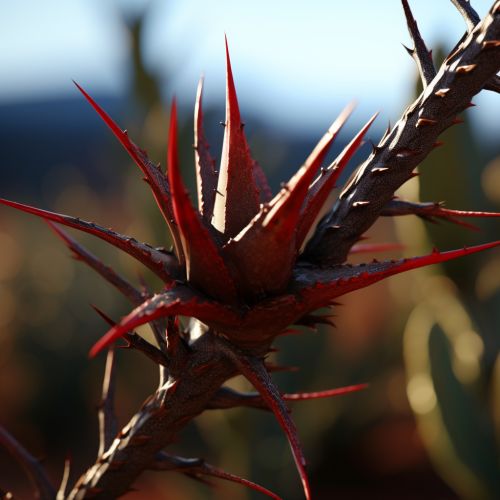Mechanisms of Plant Defense Against Herbivory
Introduction
Plant defense against herbivory or host-plant resistance (HPR) describes a range of adaptations evolved by plants which improve their survival and reproduction by reducing the impact of herbivores. Plants can sense being touched, and they can use several strategies to defend against damage caused by herbivores. Many plants produce secondary metabolites, known as allelochemicals, that influence the behavior, growth, or survival of herbivores. These chemical defenses can act as repellents or toxins to herbivores, or reduce plant digestibility.
Physical Defenses


Plants have evolved a variety of physical defenses to deter herbivory. These defenses include:
- Thorns, Spines, and Prickles: These are hard, sharp structures that can deter herbivores from feeding on the plant. They are often found on the stems or leaves of plants and can cause physical injury to the herbivore.
- Trichomes: These are hair-like structures that can be found on the surface of the plant. Some trichomes are sticky and can trap small insects, while others can contain toxins that deter herbivores.
- Tough Leaves: Some plants have leaves that are tough and difficult to chew or digest. This can be due to the presence of lignin, silica, or other structural compounds.
Chemical Defenses
Plants also employ a variety of chemical defenses against herbivores. These defenses can be constitutive (always present) or induced (produced in response to herbivore attack).
- Secondary Metabolites: These are chemicals produced by the plant that are not necessary for its immediate survival, but can deter herbivores. Examples include alkaloids, terpenoids, and phenolic compounds.
- Proteinase Inhibitors: These are compounds that can inhibit the digestive enzymes of herbivores, making the plant less nutritious.
- Volatile Organic Compounds (VOCs): These are compounds that are released into the air when a plant is damaged. They can attract predators of the herbivore, effectively using the enemy of their enemy as a defense.
Behavioral Defenses
In addition to physical and chemical defenses, plants can also exhibit behavioral defenses. These can include:
- Rapid Leaf Movement: Some plants, like the Mimosa pudica, can rapidly close their leaves when touched. This can startle herbivores and deter them from feeding.
- Timing of Flowering and Seed Production: By timing their flowering and seed production to avoid the peak activity of herbivores, plants can reduce the impact of herbivory on their reproductive success.
Coevolution of Plants and Herbivores
The defenses of plants and the counter-defenses of herbivores can lead to a coevolutionary arms race. This can result in complex adaptations in both plants and herbivores. For example, some herbivores have evolved the ability to detoxify the chemical defenses of plants, or even sequester these chemicals for their own defense.
